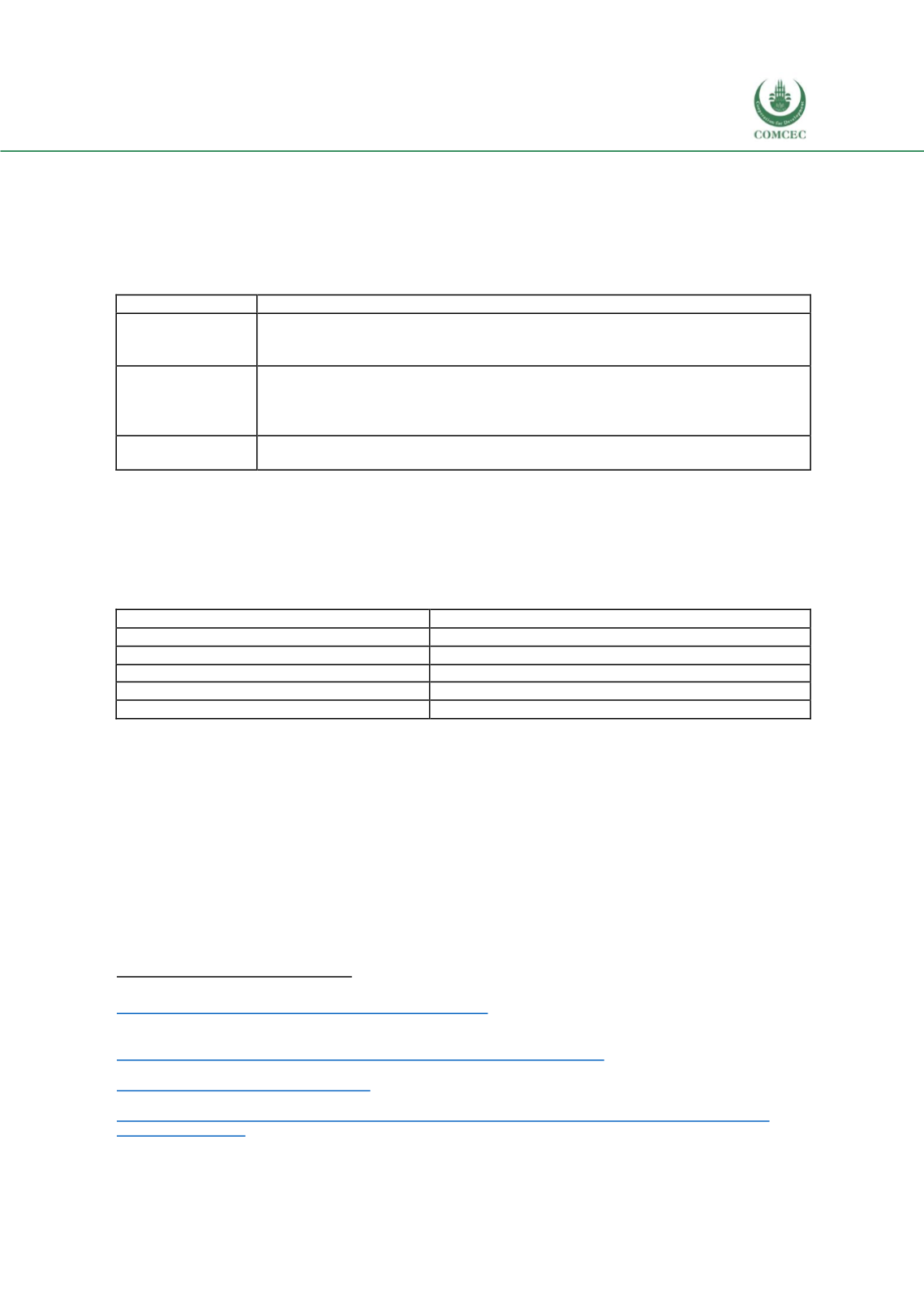

Increasing the Resilience of the Food Systems
In Islamic States in Face of Future Food Crises
61
Government Policy, Part Two: Key Legislation and Financial Support
The U.S. Congress passes laws assuring robust support for agricultural activity, food safety,
enforcing consumer rights and access to information, underpinning the effective functioning of
government agencies, and supporting each pillar of food security.
Table 30: Select U.S. Laws
Law
Description
Agricultural
Adjustment Act
(2018)
Known as the “Farm Bill,” the act is multi-faceted legislation reviewed every five
years that establishes the priorities of the USDA and determines the funding available
for various programs overseen by the agency.
Food Safety
Modernization Act
(2010)
The act gives the FDA broad powers to regulate how foods are grown, processed, and
harvested in order to prevent foodborne illnesses. The act builds on earlier
legislation supporting the FDA’s responsibilities, including the Food Quality
Protection Act (1996).
218
Consumer Bill of
Rights (1962)
The legislation seeks to protect consumers and underscore their right to access safe
food, to choose freely, and to be informed.
219
The Farm Bill passed by Congress in 2018 provided $867 billion in funding, at roughly 4% of
GDP, to support various aspects of food security. Seventy-seven percent of the funding is to be
spent on nutrition support programs, while the balance is to be spent on crop insurance,
commodity programs, and a range of other activities, including research and trade support .
220
Table 31: U.S. Farm Bill Funding
Area
Amount to be spent over 10 years, $ billions
Nutrition Programs
$663.8
Crop Insurance
$78.1
Commodity Programs
$61.2
Conservation Programs
$59.8
Other
$4.1
Source: U.S. Congressional Budget Office
Understanding the Business-Enabling Ecosystem in the U.S.
The U.S. is ranked eighth in the world for ease of doing business and third for obtaining credit
and resolving business insolvency. The country’s robust property rights and contract
enforcement mechanisms have created a strong ecosystemof business stakeholders.
221
This has,
in turn, enabled the U.S. to minimize its direct support of product pricing in the agriculture
industry to well below the $19 billion government spending limit set by the World Trade
Organization to avoid government practices that could distort international trade.
222
The U.S.
has, accordingly, developed a robust ecosystem of business, academic, and supporting
stakeholders that facilitate viable commercial activity across the food and beverage value chain.
218
North Dakota State University. (n.d.). Milestones in U.S. Food Law. Retrieved from
https://www.ag.ndsu.edu/foodlaw/overview/history/milestones21
9 Ibid.220
Congressional Budget Offfice. (2018, April 12). Congressional Budget Office Updates FarmBill Math. Retrieved from
https://www.fb.org/market-intel/congressional-budget-office-updates-farm-bill-math221
World Bank. (2018, May). Rankings & Ease of Doing Business Score. Retrieved from
http://www.doingbusiness.org/en/rankings222
USDA. (2018, August 24). U.S. Domestic Agricultural Support in the International Context. Retrieved from
https://www.ers.usda.gov/topics/farm-economy/farm-commodity-policy/us-domestic-agricultural-support-in-the- international-context/















